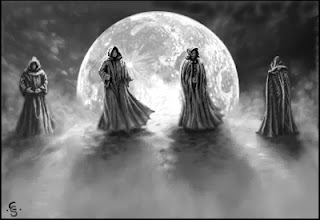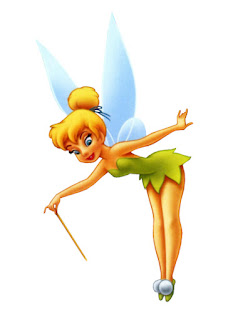LYRIC O’ THE DAY:
Selling them whiskey and taking their gold
Enslaving the young and destroying the old
Run to the hills. Run for your lives.
--Run to the Hills, Iron Maiden
The unicorn is one of my favorite mythical beasts, immortalized in story, art and song. The song part I’ve experienced first hand after my best friend wore a giant penis- shaped hat into a local Irish Pub. Before you question her fashion chops, it was her bachelorette party and phallic items are like the little black dress of those affairs. Within a minute of our arrival, the Celtic Folk Band playing that night launched into this song:
Unicorns have existed in Eastern mythologies for thousands of years. These unicorns, aka Kilin or Qilin, are not the white stallions of Western folktales. The Eastern unicorn is colorful and dragon-like. It has the tail of an ox, the body of a deer and the hooves of a horse. Folklore gives the Eastern Unicorn props for giving Emperor Fu Hsi (the inventor of writing) a scroll of characters that later inspired the Chinese alphabet. Which makes unicorns the official writer’s muse. Here’s a very cool interpretation of a Kilin by BlackUniGryphon on Deviant Art.
The Western unicorn evolved from tales gathered from Middle Eastern cultures in the 4th century B.C. A Greek physician named Ctesias wrote about the wild asses of India, fantastical beasts with white bodies, red heads, dark blue eyes and an 18” multicolored horn sticking out of their skulls. Although Ctesias never actually saw a unicorn, his manuscripts were enough to sway Aristotle as well, who believed an animal like this seemed no more fantastical than a giraffe or a zebra.
Over the centuries, others told tales of unicorns, including Pliny the Elder and Roman scholar Aelian. Alexander the Great claimed he rode a unicorn into battle. Julius Caesar said he saw one in the forests of Germany. Al Gore said he invented the unicorn. And Neil Patrick Harris saw one when he was stoned on mushrooms.
The last unicorn sighting is attributed to Genghis Khan, who ran into the beast on his way to conquer India. He took it as a sign from heaven to turn back, and India was spared. Marco Polo also saw unicorns, but historians now believe the fantastical animals he described were rhinoceroses. Or rhinoceri.
The unicorn achieved religious status when the Old Testament was translated into Greek around 300 B.C. The Hebrew version mentioned a beast called the Re’em, described as “fleet, fierce, indomitable, and distinguished by the armor of its brow.”
The Books of Job, Psalms, and Numbers all mention unicorns. In some translations, the unicorn was the first thing Adam named in the Garden of Eden. When he and Eve were ousted, the unicorn went with them as a reminder of the loss of purity and chastity. Sort of like an equine mother-in-law.
In medieval times, the unicorn was sometimes used to represent Christ. A series of seven beautiful unicorn tapestries dated to the 1500s is owned by the Cloisters in NYC. It depicts the Hunt of the Unicorn, which some believe is a symbolic representation of the passion of Christ. The pictures follow the capture and killing of the unicorn, and then its resurrection in captivity to live among men. The final tapestry shows the archetypal unicorn as we know it.
 |
| The unicorn killed and brought to the city. |
 |
| The seventh tapestry shows the unicorn captured---but very much alive. Some feel this represents Christ's resurrection. |
How did hunters catch a unicorn? Just like in many a romance novel, apparently all it took was a virgin. According to belief, unicorns are completely smitten by virgins and rendered docile and helpless. In fact, rumor has it many a unicorn met its demise with its head in the lap of a virgin. Which is a sexual metaphor for a very different blog.
 |
| Zampieri's Unicorn and Virgin Fresco. |
Other less Freudian explanations of the unicorn's demise were also popular. For instance, Jewish folktales claim that during Noah’s great flood, the unicorns were so demanding that they were banished from the ship. Other stories claim they were too busy playing to notice the coming rains. When the great flood hit, the unicorns were forced to swim. This has led some to speculate that God changed the unicorns into narwhals so they would not perish.
Around the 19th century, unicorns were retired to folklore and fairy tales. All of the “true unicorns” were thought to have been hunted to extinction for their horns, aka the alicorn. The alicorn had the ability to neutralize poisons and provide immortality for those who drank a potion made from it. Royalty often had their eating utensils made from alicorn to prevent poisoning. Fake alicorns were rampant as they were worth more money than gold. Many actually were horns from bulls or oryx. Queen Elizabeth I owned a unicorn horn in her private collection, but it was later determined to be from a narwhal.
 |
| A narwhal. |
Such horny animal confusion gives support to the belief that the unicorn was indeed a real creature. Some historians believe it originated from sightings of an extinct Eurasian rhinocerus called the Elasmotherium.
Others blame genetic malformations of normally two horned beasts. The search for a living unicorn has led to some popular hoaxes. In the 1930s, Dr. W. Franklin Dove manipulated a calf’s horn buds to make a bull with a single horn growing from its head. Others repeated the experiment with goats--P.T. Barnum often included these faux unicorns in his sideshows. The most famous one was a goat named Lancelot.
 |
| Unicorn Deer photograph from TIME in 2008. |
 |
| Dr. Dove's creation. |
Melt together 3 TBSP Butter, 10 oz mini marshmellows on the stove or microwave. Add six cups of Fruit Loops cereal and mix off of the heat. With buttered hands, shape into small balls. Dip into white frosting and top with colored sprinkles. If you have a unicorn with some issues, like my sons and I did, sour gummy worms are a nice touch.
"...Well, now that we have seen each other," said the Unicorn, "If you'll believe in me, I'll believe in you."
-- Through the Looking Glass by Lewis Carroll
-- Through the Looking Glass by Lewis Carroll














































